Santa Clara, CA Pollen and Allergy Report for Summer 2023
Pollen Allergy Trends in Santa Clara, CA
When is pollen lowest in Santa Clara, CA?

February
Lowest month total PPM
Avg. PPM
When is pollen highest in Santa Clara, CA?

May
Highest month total PPM
Avg. PPM
How does pollen in Santa Clara, CA compare to California?
Santa Clara has a lower average PPM than the state of California.
Santa Clara yearly avg PPM:
California yearly avg PPM:
How does pollen in Santa Clara, CA compare to the USA?
Santa Clara has a lower average PPM than the USA.
Santa Clara yearly avg PPM:
USA yearly avg PPM:
Is pollen worse this year in Santa Clara, CA?
Spring 2023 was about the same as 2022.
Spring 2023 PPM:
Spring 2022 PPM:
Average PPM in Santa Clara, CA

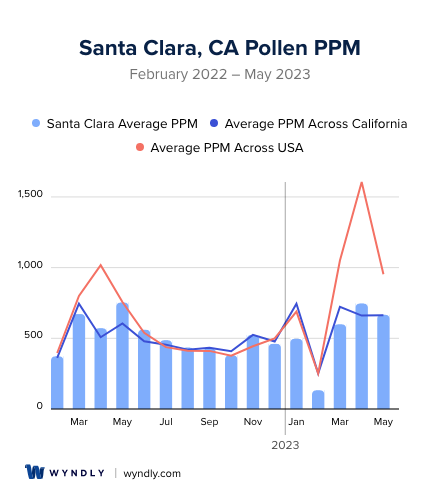
Santa Clara, CA Pollen and Allergy Breakdown by Month
Grass
When is grass pollen highest in Santa Clara, CA?
May has the highest grass pollen in Santa Clara, CA with an average PPM of
When is grass pollen lowest in Santa Clara, CA?
December has the lowest grass pollen in Santa Clara, CA with an average PPM of
Tree
When is tree pollen highest in Santa Clara, CA?
April has the highest tree pollen in Santa Clara, CA with an average PPM of
When is tree pollen lowest in Santa Clara, CA?
August has the lowest tree pollen in Santa Clara, CA with an average PPM of
Weed
When is weed pollen highest in Santa Clara, CA?
November has the highest weed pollen in Santa Clara, CA with an average PPM of
When is weed pollen lowest in Santa Clara, CA?
February has the lowest weed pollen in Santa Clara, CA with an average PPM of
Santa Clara, CA Pollen Monthly Breakdown by Pollen Type

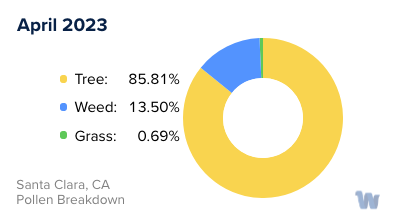
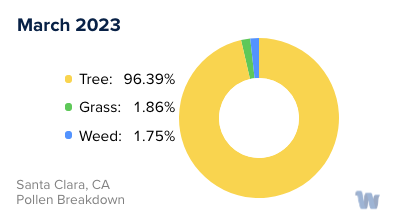
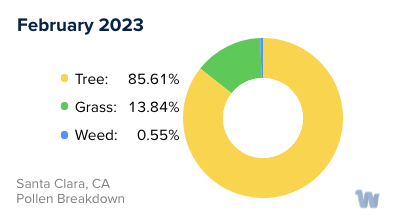
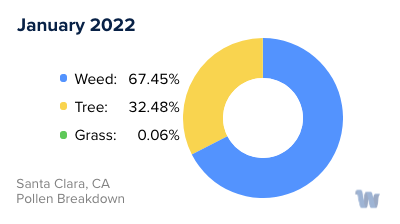

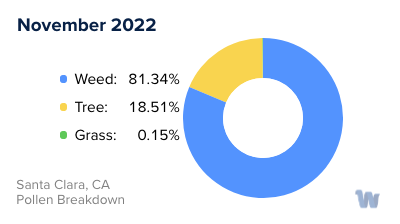

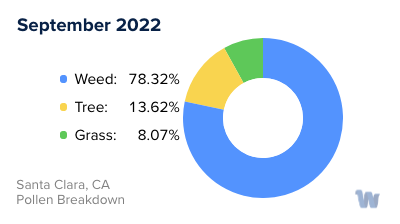
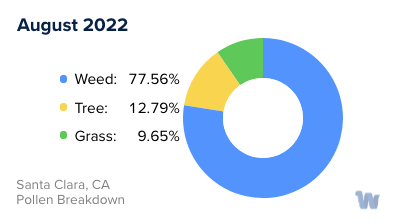
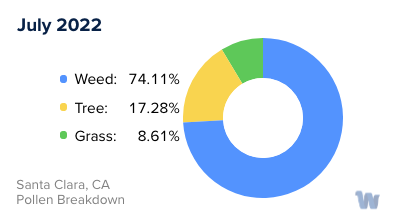
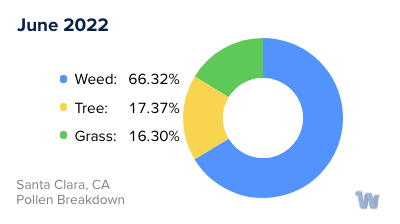

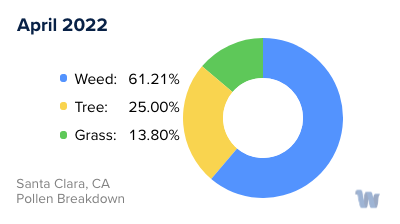

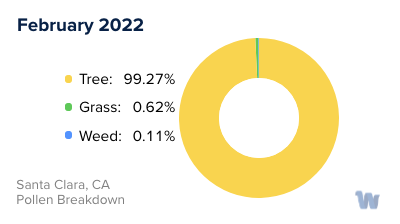
Pollen and Hay Fever in Santa Clara, CA
In the city of Santa Clara, California, residents and visitors alike may find themselves grappling with pollen allergies, more commonly known as hay fever. This condition, characterized by a runny nose, sneezing, and itchy eyes, is caused by an allergic response to airborne substances, such as pollen. Let's delve deeper into the types of pollen and the seasons when they are most prevalent in Santa Clara.
In Santa Clara, pollen is primarily sourced from three types of plants: trees, grasses, and weeds. Each of these plants release their pollen at different times of the year, leading to distinct allergy seasons.
Starting in late winter and extending into spring, trees are the first to release their pollen. Oak, cedar, and pine are among the common trees in Santa Clara that contribute to pollen allergies. Their small, light pollen grains can be carried for miles, spreading across the city.
As we move into late spring and early summer, grasses begin to release their pollen. Timothy grass, Bermuda grass, and ryegrass are often the culprits during this period. These grasses are found in parks, fields, and lawns throughout Santa Clara, making this season particularly challenging for those sensitive to their pollen.
Lastly, as summer transitions into fall, weed pollen comes into the picture. Ragweed, sagebrush, and English plantain are significant contributors to the pollen count during this season. Even though weeds are not as widespread in Santa Clara as trees and grasses, their pollen is highly allergenic and can trigger symptoms in susceptible individuals.
To summarize, Santa Clara experiences three distinct pollen seasons due to the variety of plant life in the city. Each season – tree pollen in late winter to spring, grass pollen in late spring to early summer, and weed pollen in late summer to fall – presents its unique challenges to those dealing with pollen allergies. Being aware of these pollen types and their respective seasons can help individuals anticipate and manage their symptoms better.

